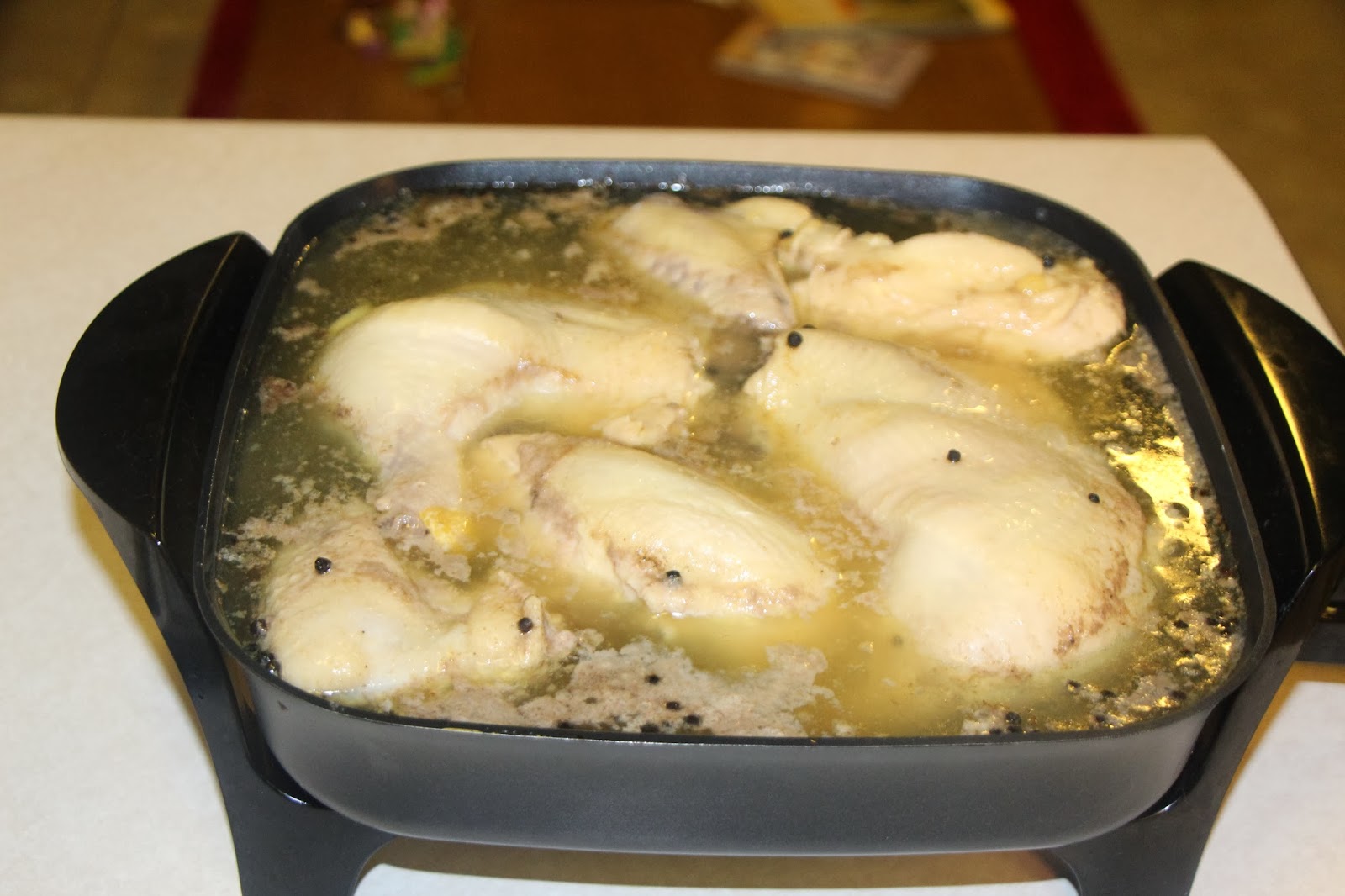We have arrived at the 5th chapter of Alton Brown's, " I'm just here for the Food". This chapter is called boiling. I think it is ironic that people who say they, "can't cook" say they can't even boil water. So let's look at what boiling water is. First, AB goes into great detail about how important water is to cooking and how there are many different "varieties of water." Tap, bottled, filtered, sparkling, and spring water. These all have slightly different qualities and therefore should be used differently. There are many things you can do that are concidered boiling. In this application we will be poaching. Poaching is defined as cooking food GENTLY in liquid that has been heated until the surface just begins to quiver. Quiver is very scientific term don't you think? AB calls that the temperature between 180-185 degrees. He also says that the best things to poach are fish, eggs, and chicken breast. Now, the first thing I usually worry about when cooking eggs and chicken is, if I cook it slow, how do I know if is going to be cooked and if the surface bacteria will be killed. This is solved by starting the liquid at a boil and then dropping to the desired temperature. This ensures that the bacteria is killed and the food is not overcooked. AB gives two ways to poach a chicken in the first application.
#1: Using a heavy bottom pot and fill it with white wine, black peppercorns, coriander seeds, and dried thyme.
The whole bottle of wine and spices went into the pot. They whole broiler chicken then goes in. Don't forget to remove the "parts" inside the cavity and rinse the chicken. Then fill the rest of the pot with water (I used tap) until the whole chicken is covered.
Put the pot onto the stove and turn to a boil. I then placed the probe into the thickest part of the breast. With my probe it also measures the outside of the probe which would correlate to the water temperature. The process took about 2-2 1/2 hours. It made the house smell amazing with the white wine. This mama loves wine so I was happy.At this point I removed the skin and picked/carved the chicken. The chicken was easy to carve if you know how to do it. I have done it about 100 times so I feel very comfortable with this, but it can be a daunting task.
I got an abundant amount of chicken that was moist and juicy. You could definitely taste the seasoning including the white wine. Yummy!
You are then left with the juices and bones that was left over. This would be great for chicken stock. I did not do it because... well I have two kids who were already whining about dinner. Maybe someday, but not today.
This chicken was served with rice and roasted summer squash. It was yummy.
#2 Method: This is also poaching chicken, but using an electric skillet. I placed the wine and black peppercorns along with a bay leaf into the skillet.
For this method, the chicken is cut into parts before the cooking. I found this more difficult. I was worried about raw chicken flying throughout my kitchen.
I then placed the chicken breasts, thighs, and wings into the skillet and placed water in the skillet until the chicken is covered. I want to note that I left the skin on.
This method was a lot easier for me, because I didn't have to sit by the stove the whole time. I set the skillet to 185 degrees and then place the probe into the thigh and set it for 185 degrees.
After about 2 hours I removed the chicken and was again left with the leftover liquid. I was more apt to use this liquid because there wasn't any bones and ligaments left in the liquid, but again I didn't save it because I was just cooking this chicken to use in a later time.
Here is the chicken. I let the chicken cool and then removed the chicken off the bone. I placed this chicken into a storage container and ate the chicken all week. We made chicken salad, chicken enchiladas, and chicken stir fry. It was nice to have chicken already cooked.
I liked both of these methods for chicken for different reasons. All in all, what a great way to prep for the week. Make one whole chicken and eat chicken 2-3 times during the week or make freezer meals. The chicken was WAY better than boiling the chicken and not watching it. Poaching is the way to go. Try it out!





















